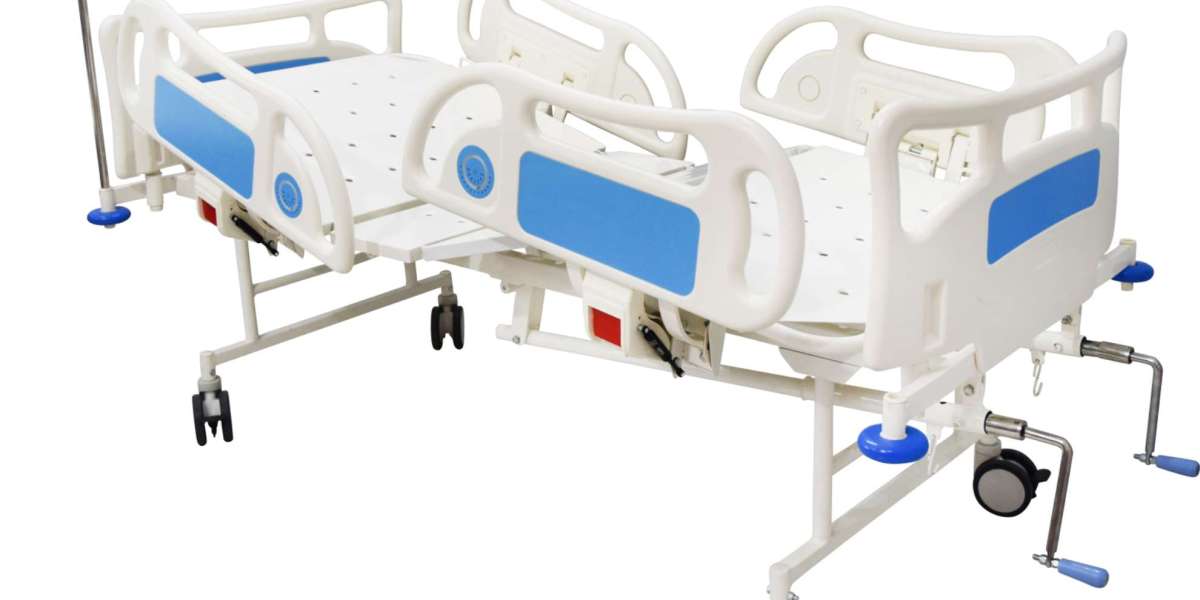For patient comfort and caregiver efficiency, there is a series of priorities involved within the healthcare industry. One crucial factor that supports both is ergonomic design, especially in hospital beds. Modern healthcare settings heavily rely on an ergonomically designed bed that enables better patient safety, supports speedy recovery, and makes life easier for healthcare professionals.
With every innovation from different hospital bed manufacturers, ergonomics has become the defining standard of quality and functionality.
Patient Comfort and Safety at the Core
Patient comfort isn’t just a luxury; it’s part of the recovery process. Beds designed with ergonomics in mind help to reduce bedsores, stiffness in muscles, and discomfort in joints. Adjustments can be made to a resting position at the backrest, knees can be raised, and side rails can be let down.
Furthermore, ergonomically-able hospital beds are meant to also reduce falls and injuries from falling. Non-slip surfaces, automatic height adjusting, and easy-to-use control panels have patient safety in mind, particularly when it comes to the older adult group or people with mobility limitations. Major medical bed manufacturers use sensors and innovative mechanisms to guarantee safety during operations and also provide warnings in case of unusual movements or pressure points.
Improving Caregiver Efficiency
Caregivers, nurses and other caregivers spend a good deal of their time managing patients in bed: turning, repositioning, or treating them. If the beds are poorly designed, that can lead to back injuries or repetitive strain for the caregivers themselves.
Ergonomic hospital bed manufacturers meet this challenge by integrating height adjustability, the use of easy side rails, and smooth maneuvering wheels. These features allow medical staff to maintain proper posture and reduce physical exertion. For example, adjustable bed height helps caregivers work comfortably without bending excessively. The emphasis on ergonomics improves the well-being of the staff and also enhances the productivity level in healthcare institutions.
Technology and Innovation in Ergonomic Beds
The evolution of medical technology has made hospital beds more intelligent and more adaptable. Ease of use through one-touch presets of positioning, memory, and wireless control features enables quick and simple adjustments without disturbing the patient.
Advanced beds may further interface with hospital networks for real-time gathering and remote monitoring of patient data. These are but examples of how ergonomic design and technology go hand in hand to create a safer, more efficient healthcare environment.
Sustainability and Long-Term Value
In addition to comfort and safety, these ergonomically designed beds will also have long-term economic benefits. Quality components lead to decreased need for maintenance and longer product life. Most manufacturers of modern hospital beds also use sustainable materials and apply manufacturing processes that promote energy efficiency.
Value-added durability and being eco-friendly will both help to ensure that hospital equipment is both cost-conscious and environmentally responsible.
Conclusion
The concept of ergonomic design has transformed hospital beds from simple resting surfaces into critical apparatus for patient recovery and efficiency in caregiving. It offers unparalleled comfort, safety, and adaptability for both busy hospitals and home care environments.
While each progressive medical bed manufacturer continues to innovate, the key factor remains palpable: to design beds for both the patient and the healthcare professional, combining ergonomics, technology, and care at their finest.
Source url: https://medium.com/@anki-tech-in/the-role-of-ergonomic-design-in-modern-hospital-beds-027d8f62e277














